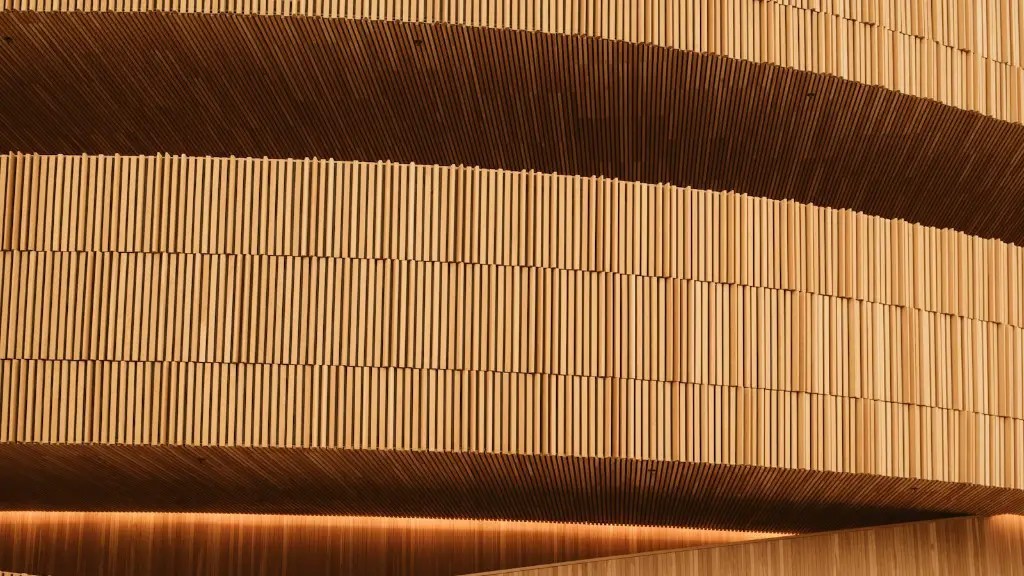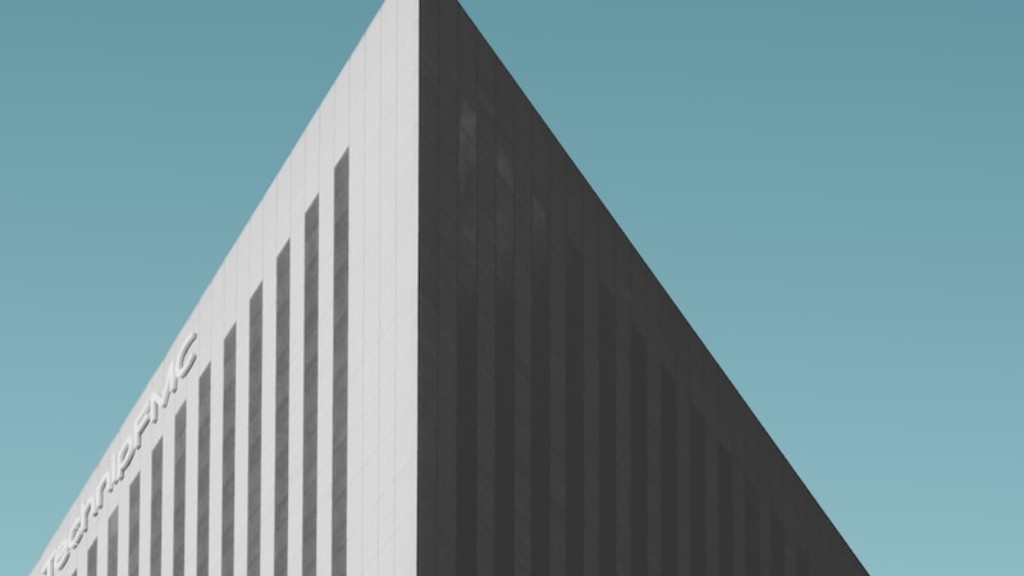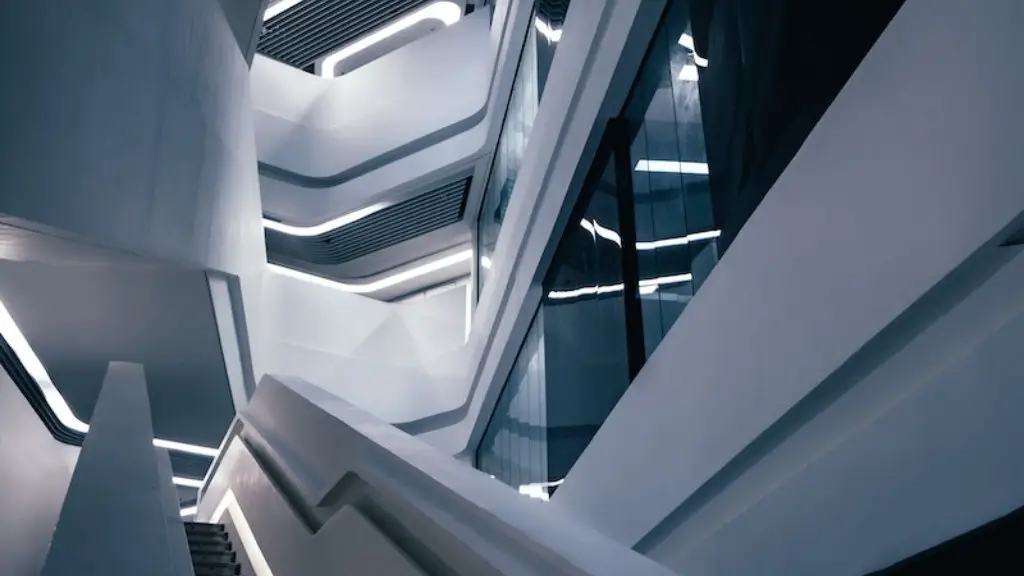The ancient Romans were a highly advanced society with many great achievements, one of which is their architecture. The ancient Romans are credited with inventing the arch, which was a key component in their large and complex structures. The arch allowed the Romans to build extremely tall and long buildings, such as the Colosseum and the Pantheon. Additionally, the use of concrete made ancient Roman architecture unique and durable.
Ancient Roman architecture is characterized by its use of arches and vaults. Arches are semi-circular or horseshoe-shaped architectural elements that support ceilings and walls. Vaults are arched ceilings or roofs, usually made of stone or brick.
How would you describe ancient Roman architecture?
Roman architecture can be described as an innovative combination of designs and materials that created new types of buildings which were impressive both from the outside and the inside. Roman buildings are often well-built, practical, and beautiful.
The Doric order was the first style of classical architecture, which is the sophisticated architectural styles of ancient Greece and Rome that set the standards for beauty, harmony, and strength for European architecture. The other two orders are Ionic and Corinthian.
What is Roman architecture meant for
The Colosseum is a prime example of a monument built as a statement of power. It was constructed under the rule of Emperor Vespasian as a means of celebrating the Roman Empire’s military successes, and it quickly became one of the most iconic buildings in the world. The Colosseum could seat up to 50,000 spectators, and it was used for a variety of entertainment, including gladiatorial contests, public executions, and animal hunts. The grandiose scale of the Colosseum was meant to impress visitors and remind them of the might of the Roman Empire.
Other examples of Roman monuments that were built as statements of power include the Pantheon, the Baths of Caracalla, and the Circus Maximus. The Pantheon was built as a temple to all the gods of the Roman Empire, and its massive scale and intricate design conveyed the wealth and power of the Roman state. The Baths of Caracalla were another massive public works project, and their size and opulence served as a reminder of the Roman Empire’s wealth and power. The Circus Maximus was the largest stadium in the Roman Empire, and it was used for chariot races, which were popular spectator sports. The scale of the Circus
The Romans were one of the first cultures to make extensive use of the dome in their architecture. Some of their most famous buildings, such as Hadrian’s Pantheon and the Baths of Diocletian, feature complex domes that were designed to fit the building’s multilobed ground plan. This characteristic of Roman architecture is what sets it apart from the architecture of other cultures at the time.
What was a key element of Roman architecture?
Arches were extremely used in Roman architecture. The Greeks followed the post lintel form of construction and Romans sought a change to this as arches could provide longer uninterrupted spaces. They did extensive experimenting in the use of arches.
The use of vaults and arches in construction is a very old technique that was used by the Romans to great effect. This method of construction allows for a much stronger and more stable structure, which is why it was used for such important public buildings as the aqueducts, baths and basilicas.
What are 2 examples of Roman architecture?
The Colosseum, built during the reign of Vespasian, is one of the most impressive structures to come out of the architectural revolution in Rome. It is a massive amphitheatre that could seat up to 50,000 people. The Markets of Trajan, built during the reign of Trajan, are another excellent example of this architectural revolution. They are a huge complex of markets and shopping arcades that cover almost two hectares. The Baths of Caracalla, built during the reign of Caracalla, are another great example of this architectural revolution. They are the largest and most luxurious baths in Rome. The Basilica of Maxentius, built during the reign of Maxentius, is another excellent example of this architectural revolution. It is a massive church that could seat up to 10,000 people.
While advances in materials and construction techniques are often thought of as modern phenomena, it is important to remember that many of the materials and techniques used in the construction of the Roman buildings were quite advanced for their time. The use of stone, wood, marble, and even glass allowed the Roman buildings to stands for centuries.
What influences Roman architecture
Roman religious architecture was heavily influenced by both the Greeks and the Etruscans. The Romans took elements from both cultures and developed their own unique style. The Etruscans were a major influence on Roman architecture, and their culture heavily influenced Roman religion. The Etruscans were a civilization in the Italian peninsula that preceded the Roman civilization. They were known for their impressive architecture, and their influence can be seen in many of the early Roman religious buildings.
Roman architecture is characterized by a number of features, including arches, domes, and columns. Arches are a common feature in Roman architecture, and can be seen in structures such as the Pont du Gard aqueduct. Domes are also a common feature of Roman architecture, and can be seen in structures such as the Pantheon in Rome. Columns are another common feature of Roman architecture, and can be seen in structures such as the Temple of Portunus in Rome.
What is a fact about Roman architecture?
Roman architecture is not only famous for its efficient design and engineering, but also for its use of relevant building materials that helped them achieve success with construction. Some of the most famous structures designed by the Roman architects include domes, amphitheaters, temples, arches, bathhouses, aqueducts, apartments, and so on.
The Romanesque style was widely used in Roman architecture during the 11th, 12th and 13th centuries. Later on, the city became one of the main centres for Renaissance and Baroque architecture. Rome’s cityscape is also characterised by Neoclassical and Fascist styles.
How Roman architecture changed the world
Roman architecture was so influential because it was not just about beautiful buildings and grand designs, but also about creating a functional infrastructure. The Romans were the first to develop a vast and complicated road system that connected cities to the capital. This allowed the Roman Empire to function effectively and to expand its territory.
Old Roman arches were built with a special type of concrete that was very durable. This concrete was made from a mixture of volcanic sand and lime, and it was able to support large amounts of weight. This enabled people to build larger and more variable types of buildings, like the aqueducts we discussed above.
What are three characteristics of Roman architecture?
Roman architecture is characterized by arches, domes, and columns. Arches are used to support the weight of the structure, while domes are used to create a sense of space and light. Columns are often used to decorate the exterior of a building.
Romanesque architecture was widely used in Rome during the 11th, 12th, and 13th centuries. The city later became a major center for Renaissance and Baroque architecture. Rome’s cityscape is also predominantly Neoclassical and Fascist in style.
What are the characteristics of ancient architecture
Classical architecture is some of the oldest and most influential architecture in the Western world. It originated in ancient Greece and Rome and is characterized by features such as symmetry, columns, and rectangular windows. For centuries, architects have been drawing inspiration from these civilizations and incorporating traditional ideals into subsequent styles of architecture.
Classicizing elements are those features that are reminiscent of the art of ancient Greece. This can include features like smooth lines, elegant drapery, idealized nude bodies, highly naturalistic forms, and balanced proportions. The Augustus and the Julio-Claudian dynasty were particularly fond of incorporating Classical elements into their art.
Final Words
Ancient Roman architecture is best known for its large public buildings, such as temples, basilicas, and aqueducts. However, the Romans also built a large number of smaller, private buildings, such as houses, shops, and baths. Roman architecture is characterized by its use of the arch and its extensive use of concrete.
Ancient Roman architecture is extremely impressive and has influences all over the world. The grandeur of the buildings and the ingenious engineering is something that still fascinates people today. It is clear that the architecture of Ancient Rome was ahead of its time and continues to be an inspiration for architects and engineers.





